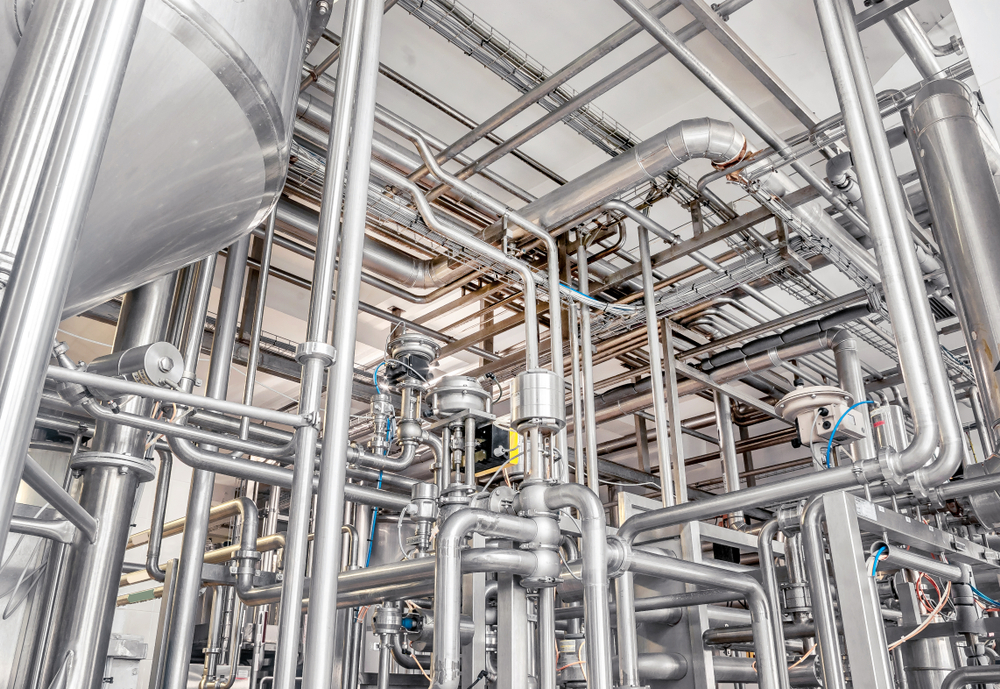The Differences Between Steel Tubes & Pipes
December 2, 2021 | Categorized in: Types

If you take a steel rod or bar and hollow out the middle, is it a pipe or a tube? Many people use these interchangeably, but there are considerable differences in their uses and properties to accomplish those tasks. Below, we’ll outline some of the contrasts between the two categories of steel products and why it’s important to understand the differences for your own projects.
Distinctions
Use
Most differences between tube and pipe come down to their uses and applications. While pipes are mostly used to carry gas or liquid (like the pipes in your home), tubing is often used structurally in everything from hospital equipment to construction scaffolding. These vastly different uses require very different properties of the steel, which is where tubing and piping really diverge.
Shape
Because of the pressure that steel pipes are often subjected to from the gas or liquid flowing through them, it’s critical that there are no concentrations of stress and pressure in corners. This is why steel pipes are always circular, while steel tubing — which doesn’t have internal pressure pushing against it — can come in circular, square, and rectangular shapes.
This allows steel tubing to be more flexible for a range of applications and fit different scenarios or specifications. It also means that it can be used in structural projects where any rolling could be disastrous for safety and stability.
Size
Steel pipes usually have to move huge volumes of liquids or gas, often underground, so bigger is better. They can get as large as several feet in diameter, while steel tubing is generally much smaller to fit as components in larger projects or equipment.
It’s also important to note that because of their different uses, they are also discussed and listed by different measurements. Because pipes need to consider the carrying capacity more than the outer diameter, they’re often measured by their inner diameter (ID) and schedule (wall thickness), or by using their nominal pipe size (NPS). For steel tubes, the outer diameter (OD) is what’s primarily used to measure them, as this is what’s most critical to their structural uses and how they fit with other pieces.
Our steel pipe and tube sizing charts:
Steel Rectangular Tube Size Chart
Precision
Another effect of their utilizations, the precision to which pipes and tubes are manufactured and tested are distinct as well. Because tubing is used in very strict and smaller applications like medical or lab equipment, structural support, and automotive manufacturing, the precision and tolerance (particularly of OD) is much more strict than steel pipes. While steel pipes are still rigorously tested to make sure they can withstand the required pressure and fit the project, there is more wiggle room in some of their dimensions that steel tubing doesn’t have.
Material
Something else that factors not only into properties required for a project, but also cost, is the material used for tubes and pipes. Even steel can have different types and grades, and that choice will depend on what it’s being used for. Pipes, which need to have high yield strength, ductility, and pressure ratings, are more likely to choose carbon or low alloy steel.
On the other hand, steel tubes need to have high tensile strength, hardness, rigidity, and precision, making mild carbon steel a popular material choice.
No matter what you need, we can supply it
Whatever project you have that needs steel, we can supply it. We have pipe and tubing options, as well as other structural steel shapes including beams and channels, sheets, and plates. Check out Service Steel Warehouse’s services and how we can supply and quickly ship steel piping, tubing, and more today.
